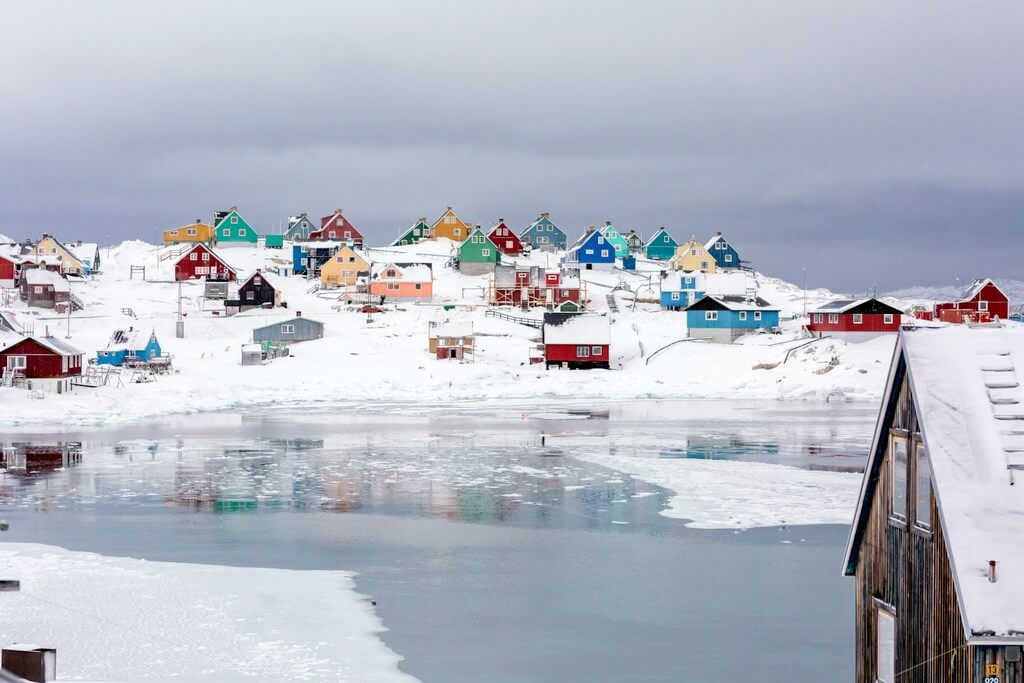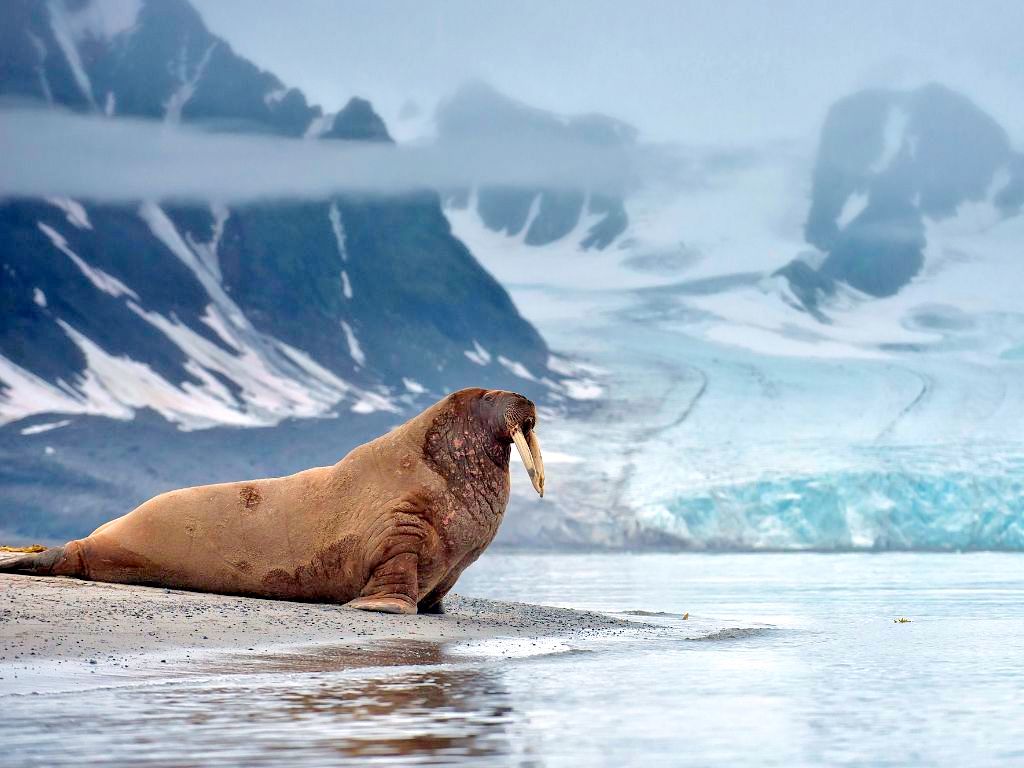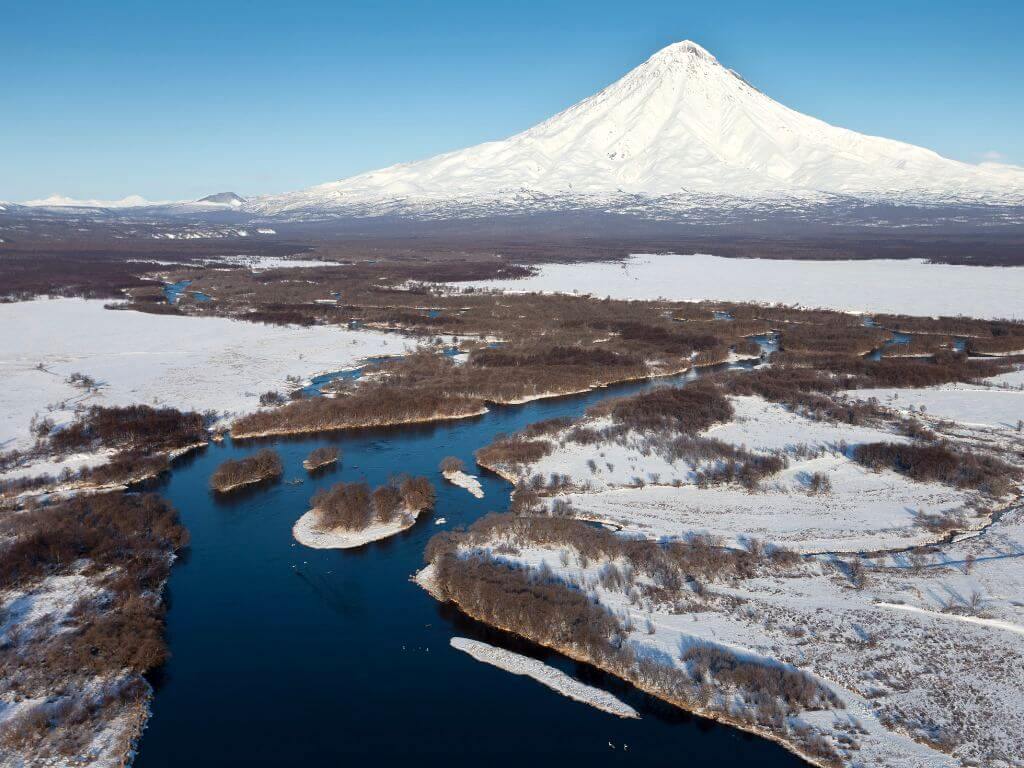The Arctic is one of the most beautiful regions you’ll ever visit, and if you’re someone with an eye for adventure, no matter how wild, a tour of the Arctic should be on your travel bucket list.
The world’s coldest region, the Arctic cuts across Canada, Denmark, Russia, Greenland, Alaska, Norway, Iceland, Finland, and Sweden, and offers glacial landscapes, waterfalls, wildlife, and the much sought after Northern Lights.
These regions characterize some of the earth’s loveliest places, and if you look beyond the chill, there’s so much to unpack on a north pole expedition.
With so much choice, here are 9 ideas for how to experience the Arctic.
9 Arctic Adventure Vacation Ideas
Wildlife Safari: Franz Josef Land & Novaya Zemlya
Deep in Russia, this is a space for a safari and wildlife adventure. It is a place where families, adults, and kids can go for a polar bear expedition and boundless cruise.
Novaya Zemlya is one of the region’s largest Arctic archipelagos and a place for various wildlife adventures. You’ll find several whales and seabirds and experience limitless thrills in the glaciers, fjords, and icebergs.
Nature in Manitoba, Canada
Manitoba is also one of the world’s most beautiful places, with green aurora borealis in the sky.
Also known as Aurora Borealis, this is mother nature’s most impressive light show, and while there is no exact science to seeing the Northern Lights, Manitoba is usually a safe bet.
You’ll find polar bears here too, and can take a ride in the national park, visit the museums, and catch sight of migrating birds. If you’re there during the summer, the beluga whales can be a very uniquie sighting.
Many populations of belugas migrate as the sea ice changes in the Arctic. They move south in the fall as the ice forms and then return to feed again in the spring, as the ice breaks up. Like polar bears, the beluga depends on sea ice for its existence and can be directly impacted by climate change.
Canada’s Northwest Passage for Ancient Glaciers
Canada’s Northwest Passage is the sea route between the Atlantic and Pacific oceans via waterways through the Canadian Arctic Archipelago.
This is a fabulous cruise option for polar bear expeditions, and seeing ancient glaciers aboard the The Canadian Arctic Express.
Take zodiac excursions and keep an eye out for musk oxen, narwhals, caribou, and several others, while getting up close and personal (closer than you ever have been!) to discover the magnificence of ancient glaciers, icebergs, and granite mountains that are vast beyond belief.
You’ll have the opportunity to interact with the locals who live in these incredibly remote regions, and gain an appreciation for life in one of the most difficult places on earth to live.
Cruises typically start from Toronto.
The World’s Largest Island: Greenland
Greenland’s Backcountry is one of the world’s finest places. It is the largest island in the world (that is not a continent!), and is found in the north of the Arctic circle.
Greenland is a leading place for ecotourism; it is smeared with ice, and you can get around through bush plane flights, dog sledding, going on ski rides, or snow machines.
This is a place to embrace mountain climbing without profuse sweating, a spot for kayaking and glacier walking. It’s also a location to mix with beautiful arctic wildlife, and to see some of the world’s coastal waters and whales.
Go to the Nuuk and the Greenland National Museum, see the Northern Lights, visit the Qaqortoq Museum, explore the Remnants of Eric, the Reds Norse colonies, and visit many other places.
Wildlife in Spitsbergen and Svalbard
The wildlife capital of the Arctic, Spitsbergen and Svalbard are a Norwegian archipelagos between mainland Norway and the North Pole.
Polar expeditions and cruises leave from here, and on top of seeing polar bears, walrus and reindeer in their natural environments, there’s also the Svalbard Museum, the Galleri Svalbard, and North Pole Expedition Museum for history of the region.
You’re free to swim in the cold coastal waters if you have the guts, or can go kayaking if you’d prefer to stay a bit warmer!
The Northern Lights make appearances here from November through February, though between mid-November to the end of January travelers can experience an additional natural phenomenon: the Polar Night.
The Polar Night refers to the three months Svalbard goes without daylight. This perpetual eerie blue twilight means you have the best chances of seeing the Northern Lights, though do keep in mind that you have better chances of spotting wildlife like reindeer, walrus and polar bears after this lifts (ie when you can see).
Vast Reserves in The Russian Far East
If you’re looking for some time off the beaten path, some of the most attractive nature reserves can be found in the far east of Russia, especially in Kronotsky, on the coast of the Kamchatka Peninsula.
This region is protected for wildlife, and you can whale watch, trek through the wild forests, watch fish in the rushing rivers, climb volcanoes, go cruising on the ice, and be blown away by nature.
Kronotsky Nature Reserve is one of the oldest and largest in Russia, and includes Geyser Valley, one of the only geothermal hotspots in the country.
It is commonly referred to as the Land of Fire and Ice for it’s mix of 25 volcanoes, and geysers which include Giant Geyser, shooting to 30 m in height. There is a thermal lake, waterfalls, and camps for visiting tourists.
Iceland: The Real Land of Fire and Ice
One of the most peaceful countries in Europe and the world sits in the North Atlantic. Iceland is a place to find volcanic locations, rugged coastlines, thundering waterfalls, and glaciers all in a tourist friendly, eco-friendly location.
As with all arctic location, the experience of summer in Iceland is vastly different to the experience in winter, so the choice depends on whether you’re looking for the midnight sun (where the sun never sets), or the polar night.
The Blue Lagoon, Reykjavik, the Golden Circle; if you’ve researched Iceland in the slightest you’ll know the list. Though there are more off the beaten path gems that most people miss, including Laki, Vidgelmir Cave, Gjáin, and Aldeyjarfoss.
Wildlife access in Iceland is unparalleled, and roam freely throughout the small island. Horses who roam freely by the side of the road (though are usually owned by someone regardless of roaming free), and exotic seabirds, like puffins arrive by the million for breeding season between April and August.
Iceland is a country famous for its hot tub culture, and there are many thermal pools beyond the famous Blue Lagoon. Be sure to pack your swim suit, even in winter.
Lapland, Finland
You’ll be traveling above the Arctic Circle to get to Lapland, as this region runs from its capital Rovaniemi up to Utsjoki in Finland’s very far north.
Finnish Lapland is an exotic region known for its round-shaped rugged mountains (tunturi), extensive pine forests (taiga), treeless flat lands (tundra), pristine lakes and rivers with gold nuggets.
Winter means the polar night and northern lights. You can go sleigh riding, husky riding, and join polar bear expeditions, though be sure to pack and dress for freezing temperatures – usually between -5C and -30C from November until April.
You can also take a trip to the Amethyst Mines, enjoy the wonders of the Arktikum Science Museum, flex at the Pyha-Luosto National Park, visit Saariselka for its lovely environment, and go to the Santa Claus Villagefor Christmas all year round.
The National Parks of Alaska
Alaska is the only place in the United States that can be considered an Arctic region. And one of the best ways to experience nature here is to spend time in its National Parks.
There are 17 national parks and 16 national wildlife refuges across Alaska, with some of the most famous being Denali National Park, Kenai Fjords National Park (check this 7 day itinerary), and Glacier Bay National Park.
Alaska holds more than half of America’s national park lands, so this area is dominated by nature, and the wildlife sightings are unparalleled; you’re likey to see moose, bear, wolves, and caribou.
The Arctic region is at the northernmost point of the world. Cutting across eight countries, these are wild places which offer wild adventures.















